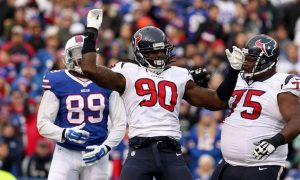
kinesics
Communication is a nuanced dance of words, tones, and gestures. While verbal language is an obvious player in this intricate performance, the significance of nonverbal communication, particularly kinesics, cannot be overstated. In this comprehensive guide, we delve into the world of kinesics, exploring its types, the subtle differences between kinesics and body language, and the intricate study that underlies effective communication.
What is Kinesics?
Kinesics, derived from the Greek word ‘kinesis‘ meaning movement, is the study of nonverbal communication through bodily movements, gestures, and facial expressions. Unlike spoken or written language, kinesics deals with the silent language that accompanies words, providing rich context and layers of meaning to our interactions.
Types of Kinesics
1. Emblems
Emblems are specific gestures or movements that have a direct verbal translation. They often carry cultural significance and can substitute for words in certain contexts. For instance, a nod of the head may universally signify agreement.
2. Illustrators
Illustrators are gestures that accompany speech and visually illustrate the verbal message. They help to emphasize, clarify, or elaborate on spoken words, providing a visual counterpart to the narrative.
3. Affect Displays
Affect displays involve facial expressions and body language that convey emotional states. From a smile reflecting joy to furrowed brows expressing concern, affect displays are crucial in understanding the emotional nuances of communication.
4. Regulators
Regulators are gestures and movements used to manage the flow of communication. They signal when it’s one’s turn to speak, maintain the pace of a conversation, or indicate a desire for someone else to continue talking.
5. Adaptors
Adaptors are unconscious movements often linked to stress, anxiety, or discomfort. These behaviors, like playing with one’s hair or tapping fingers, can offer insights into an individual’s emotional state.
Kinesics vs. Body Language
While kinesics and body language are often used interchangeably, it’s essential to distinguish between the two. Body language encompasses a broader spectrum of nonverbal cues, including facial expressions, gestures, posture, and eye contact. Kinesics, on the other hand, specifically focuses on the study of body movements as a form of communication.
Understanding this distinction is crucial for anyone seeking to master the art of effective communication. While body language provides a holistic view of nonverbal communication, kinesics delves into the intricate details of how specific movements convey meaning.
The Study of Kinesics
The scientific exploration of kinesics involves rigorous research and analysis. Notable scholars in the field have contributed to our understanding of how body movements influence communication dynamics. Among them, Ray Birdwhistell, often regarded as the founder of kinesics, emphasized the importance of micro-movements and their role in conveying hidden messages.
Studying kinesics involves observing and interpreting these subtle movements, considering cultural nuances, individual differences, and contextual factors. Researchers use video analysis, controlled experiments, and cross-cultural studies to unravel the complexities of nonverbal communication.
Types of Body Language
Now, let’s shift our focus to the broader realm of body language, exploring its diverse manifestations in human communication.
1. Facial Expressions
Facial expressions are perhaps the most recognizable form of body language. They convey a range of emotions, from happiness and surprise to sadness and anger. A smile, a furrowed brow, or narrowed eyes can speak volumes without uttering a single word.
2. Gestures
Gestures involve the movement of hands, arms, or other body parts to express thoughts, feelings, or ideas. Common gestures include pointing, waving, or using hand movements to emphasize a point.
3. Posture
Body posture communicates a wealth of information about a person’s attitude, confidence, and emotional state. Whether standing tall in a confident posture or slouching in a more relaxed stance, our bodies continually signal information to those around us.
4. Eye Contact
The eyes are powerful conveyors of emotion and intention. Maintaining eye contact signifies engagement, attentiveness, and sincerity, while avoiding it may suggest discomfort, shyness, or deceit.
5. Proxemics
Proxemics explores the concept of personal space and its impact on communication. Cultural variations influence our comfort levels with proximity, and understanding these differences is vital for effective cross-cultural communication.
The 5 C’s of Body Language
Mastering body language involves navigating through its various facets. The 5 C’s of body language serve as a valuable framework for understanding and utilizing nonverbal cues effectively.
1. Clarity
Clarity in body language implies sending clear and unambiguous signals. It’s about ensuring that your nonverbal cues align with your intended message. For example, a firm handshake can convey confidence and assertiveness.
2. Consistency
Consistency is crucial in nonverbal communication. It involves ensuring that your body language aligns with your verbal communication. Inconsistencies between what is said and what is expressed nonverbally can lead to confusion and misunderstanding.
3. Congruence
Congruence refers to the harmony between different elements of body language. When facial expressions, gestures, and posture work in sync, they enhance the overall effectiveness of communication. Congruence ensures that all nonverbal cues support a unified message.
4. Context
Understanding the context is paramount in interpreting body language. The same gesture or expression can carry different meanings depending on the situation. A smile may indicate friendliness in one context and nervousness in another.
5. Cultural Sensitivity
Cultural sensitivity acknowledges that body language can vary significantly across different cultures. A gesture that is acceptable in one culture may be offensive in another. Being aware of these cultural nuances is essential for avoiding misunderstandings.
Conclusion
In the intricate dance of communication, kinesics and body language play pivotal roles, adding depth and nuance to our interactions. From the subtle movements of our hands to the expressions on our faces, these nonverbal cues enrich our messages and provide insight into our thoughts and emotions.
Mastering kinesics involves understanding the various types of movements that convey meaning, while the broader scope of body language encompasses facial expressions, gestures, posture, eye contact, and the nuanced concept of proxemics. The distinctions between kinesics and body language, as well as the 5 C’s of body language, offer a comprehensive framework for effective nonverbal communication.
As we navigate the complexities of human interaction, let’s not forget the cultural variations that shape our expressions. Cultural sensitivity is key to interpreting and responding appropriately to the diverse nonverbal cues we encounter in our globalized world.
In conclusion, by delving into the study of kinesics and body language, we unlock a deeper understanding of the silent language that accompanies our words. Whether in professional settings, social situations, or cross-cultural exchanges, the mastery of nonverbal communication enhances our ability to connect, empathize, and communicate with impact.





